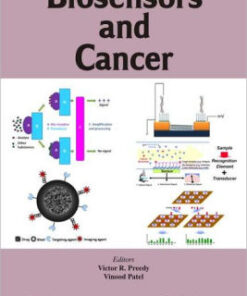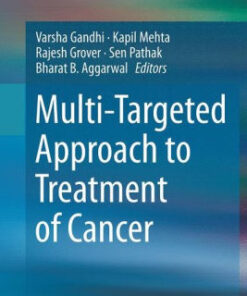(PDF) Male Reproductive Cancers by William D. Foulkes
$22.00
Download instantly Male Reproductive Cancers – Epidemiology, Pathology and Genetics by William D. Foulkes, Kathleen A. Cooney. It is ebook in PDF format.
ISBN-10: 1461425115 ISBN-13: 9781461425113
Preview
This is the PDF eBook version for Male Reproductive Cancers – Epidemiology, Pathology and Genetics by William D. Foulkes, Kathleen A. Cooney
Table of Contents
Male Reproductive Cancers: Epidemiology, Pathology and Genetics Introduction – Kathleen A. Cooney, MD and William D. Foulkes MB PhD A) Epidemiology 1.0 THE EPIDEMIOLOGY OF PROSTATE CANCER – Graham Giles, BSc, MSc, PhD INTRODUCTION Prostate structure and function Aspects of prostate pathology relevant to cancer epidemiology Prostate cancer diagnosis, screening and treatment 1.2 DESCRIPTIVE EPIDEMIOLOGY 1.3 THE EPIDEMIOLOGICAL INVESTIGATION OF CAUSES 1.3.1 Environmental factors not associated with prostate cancer 1.3.2 Environmental factors possibly associated with prostate cancer 1.3.2.1 Soy, other legumes and phytoestrogens 1.3.2.2 Cruciferous (Brassica) vegetables 1.3.2.3 Carotenoids, opherols and other vitamins 1.3.2.4 Animal based foods, fats and related exposures 1.3.2.5 Dairy foods, calcium and vitamin D 1.3.2.6 Trace elements and vitamin supplements 1.3.2.7 Dietary patterns 1.3.2.8 Energy balance, obesity and physical activity 1.3.2.9 Sexual behaviours and infections 1.3.3 Host factors possibly associated with prostate cancer 1.3.3.1 Sex steroid hormones 1.3.3.2 The IGF axis and growth factors 1.3.3.3 Inflammation 1.3.3.4 Family history and genetics 1.4 CONCLUSION 1.5 REFERENCES THE EPIDEMIOLOGY OF TESTICULAR CANCER – Katherine A. McGlynn, PhD, MPH and Michael B. Cook, PhD INTRODUCTION HISTOLOGY AND PRECURSOR LESIONS INCIDENCE AND MORTALITY Incidence – Age patterns Incidence – Racial and geographicpatterns Mortality Migrant patterns 2.4 ASSOCIATED MEDICAL CONDITIONS 2.4.1 Cryptorchism 2.4.2 Subfertility 2.4.3 Microlithiasis 2.5 PRENATAL RISK FACTORS 2.5.1 Birth weight and gestational age 2.5.2 Maternal age 2.5.3 Maternal parity, birth order, sibship size 2.5.4 Maternal smoking 2.5.5 Other perinatal factors 2.6 MATERNAL ENDOGENOUS HORMONES 2.7 MATERNAL EXOGENOUS HORMONES 2.8 ENDOCRINE DISRUPTION CHEMICALS 2.9 POSTNATAL RISK FACTORS 2.9.1 Anthropometry 2.9.2 Age at puberty 2.9.3 Nutrition 2.9.4 Endogenous hormones in men 2.9.5 Physical activity 2.9.6 Socioeconomic status and urban/rural residence 2.9.7 Occupation 2.9.8 Viruses 2.9.9 Other factors 2.10 HISTOLOGIC DIFFERENCES IN RISK FACTORS 2.11 FAMILY AND TWIN STUDIES 2.12 CANCER RISKS AMONG TESTICULAR CANCER SURVIVORS 2.13 CONCLUSION 2.14 REFERENCES B) Pathology 3.0 PROSTATE CANCER, A PATHOLOGICAL PERSPECTIVE – Louis R. Bégin, MD and Tarek A. Bismar, MD 3.1 INTRODUCTION 3.2 MICROANATOMY AND HISTOLOGY AS RELATED TO NEOPLASIA 3.3 GROSS FEATURES 3.4 MICROSCOPIC AND DIAGNOSTIC FEATURES 3.5 IMMUNOPHENOTYPE 3.6 GLEASON HISTOLOGICAL GRADING SYSTEM 3.7 PATHOLOGICAL PROGNOSTIC DETERMINANTS OTHER THAN GRADING 3.8 MODE OF TUMOR SPREADING 3.9 IATROGENIC HISTOLOGICAL CHANGES RESULTING FROM THERAPY 3.9.1 Radiation therapy effect 3.9.2 Androgen deprivation therapy effect 3.10 PUTATIVE PRECURSOR LESIONS OF PROSTATIC ADENOCARCINOMA 3.10.1 Prostatic intraepithelial neoplasia 3.10.2 Atypical adenomatoous hyperplasia 3.10.3 Glandular atrophy 3.11 ATYPICAL SMALL ACINAR




